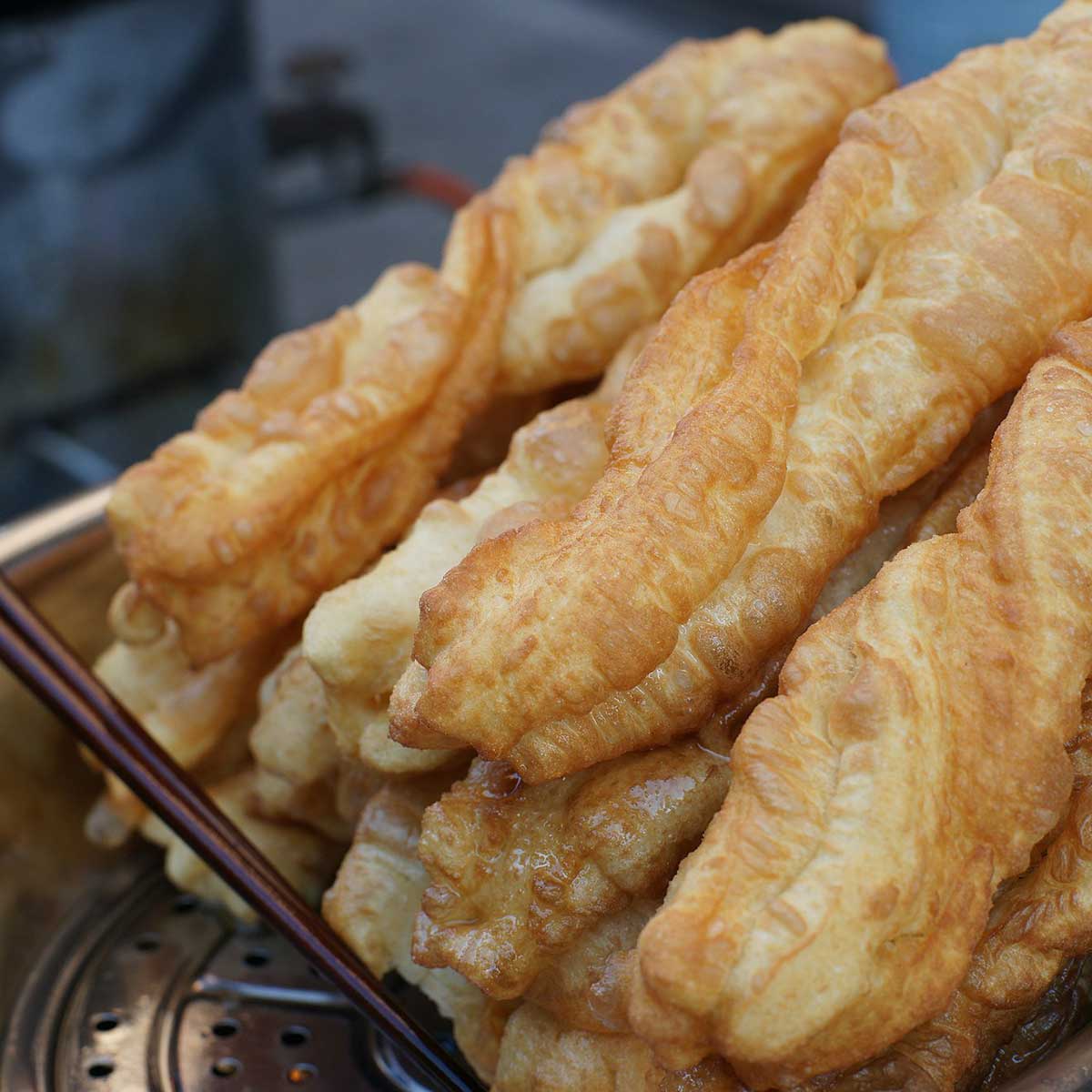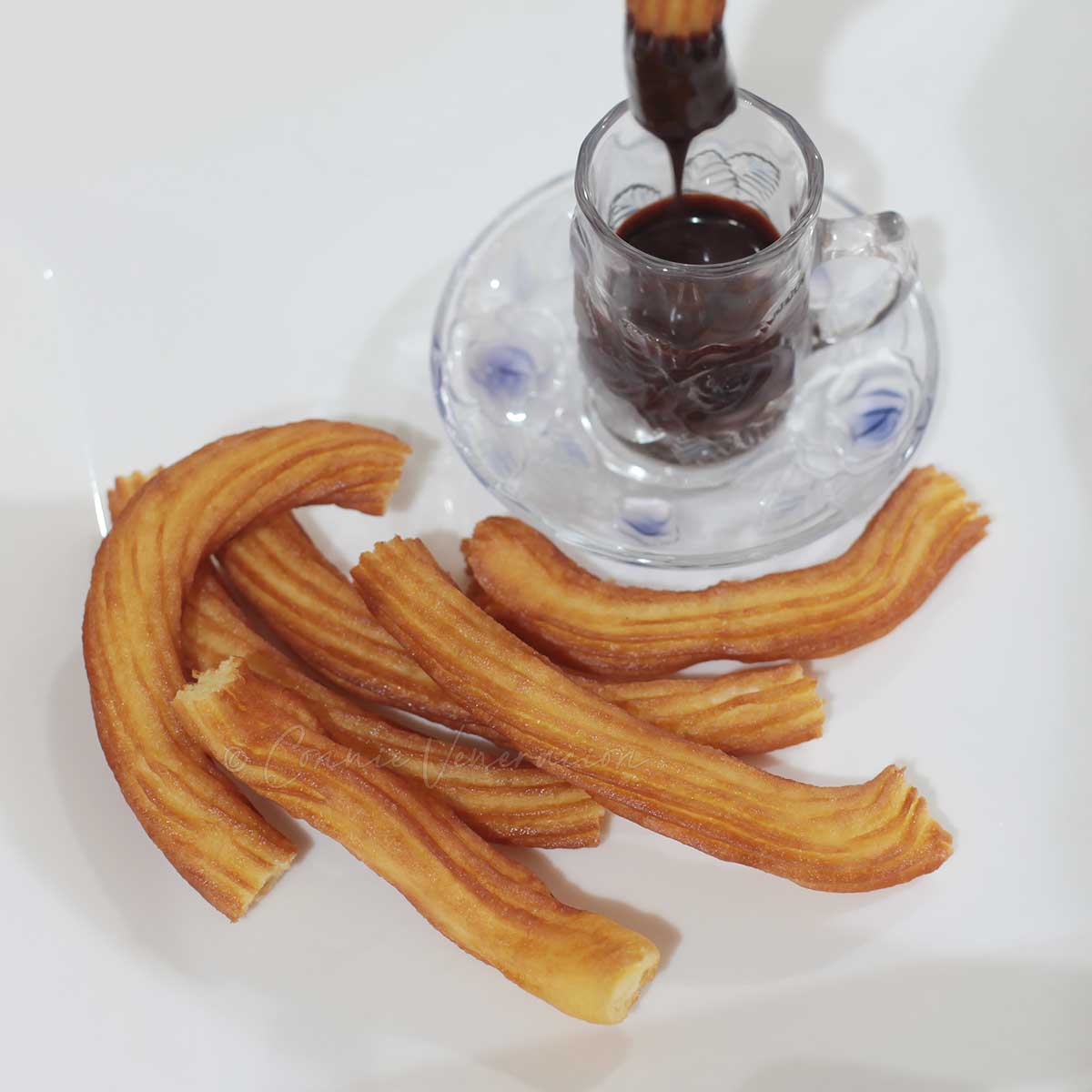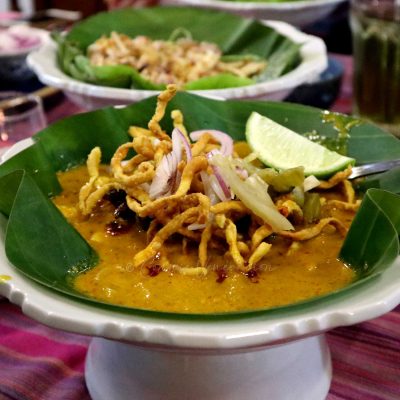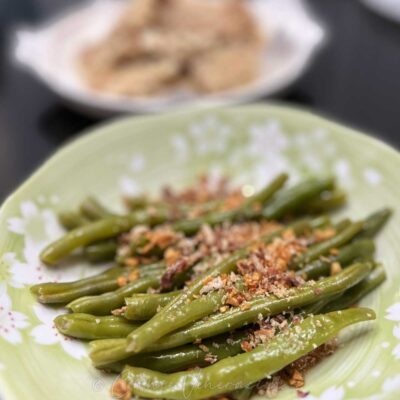Churros are very much a part of the Filipino Christmas and we’re sure that they were introduced to the islands by Spain. But are churros Spanish in origin at all? There is a theory that the Chinese youtiao is the ancestor of churros, and it was the Portuguese that introduced the fried bread to Europe.
What is youtiao?
It is a Chinese deep-fried dough. To be more precise, two long thin strips of dough are pressed together before going into a wok of hot oil.

Youtiao is known by various names around Asia where the Chinese have settled. But it is its Cantonese name, yàuhjagwái, that adds a lot of nuance to this fried bread. Yàuhjagwái translates to “oil-fried devil”. According to folk tales, the yàuhjagwái was first made as a sign of political protest.
The death of General Yue Fei
It all goes back to the Song Dynasty in China more than a thousand years ago. The Song Dynasty is divided into two periods. During the Northern Song (960–1127), the capital was in Bianjing (today, Kaifeng). Then the Song lost to the Jin Dynasty after the latter conquered the northern territory, captured Emperor Qinzong and made him a prisoner.
The Song retreated south. Qinzong’s younger half-brother, Zhao Gou, was proclaimed Emperor Gaozong. He established the new Song capital and held court in what is known today as Hangzhou during the Southern Song Dynasty (1127–1279).
Toward the end of the Northern Song Dynasty, a man named Yue Fei joined the army. He would later become a general whose military career was marked by ceaseless efforts to repel the Jin Dynasty and retake territories that it had invaded.
By 1140, Yue Fei seemed ready to recapture the north from the Jin Dynasty when he was recalled by Emperor Gaozong. The emperor had been advised that a defeat of the Jin Dynasty might lead to the release of Emperor Qinzong and that would mean that Gaozong would lose the crown.
Yue Fei obeyed and returned. How and when he died is not clear. One story says he was ambushed on his way back to Hangzhou. Another story says he was able to return and was immediately imprisoned. False charges were lodged against him and he was executed.
Qin Hui, Chancellor of the Song Dynasty, has been widely regarded as the traitor responsible for his death. Qin Hui was captured with Emperor Qinzong when the Jin took the north but, for some reason, he reappeared as a free man and became an influential politican in the Southern Song court.
If we are to sift through the historical stories and myths, it is apparent that Qin Hui was working with the Jin Dynasty and it was his mission to end the territorial wars. Through him, the Treaty of Shaoxing was signed, all military conflicts ceased and the Southern Song Dynasty relinquished its claims over all former territories that had been taken by the Jin Dynasty.
The birth of youtiao
Central to the end of military conflicts was the death of Yue Fei who was hellbent on recapturing the north. Whichever manner Yue Fei died, it is not disputed that his death was met with public disapproval. He was a popular figure in life and, in death, became a folk hero.
The story goes that a pastry maker created youtiao tosymbolize the betrayal and death of Yue Fei. The twin dough pressed together, and drowned in boiling oil to cook into bread, were effigies of Qin Hui and his wife.
Yàuhjagwái in Cantonese or “oil-fried devil”. Making youtiao is like punishing and inflicting unspeakable pain on Qin Hui and his wife over and over, and consuming the traitorous couple until they are nothing. And so youtiao became a Chinese staple.
The Portuguese connection
When the Portuguese sailed East, they paid attention to the delectable food they encountered in China and brought back with them to Europe new culinary techniques that they proceeded to tweak.

The churro is part of that story. The Portuguese discovered youtiao. They watched the Chinese deep-frying pulled dough to create crisp-outside-chewy-inside bread sticks and they were badly smitten. But because these buccaneers weren’t exactly chef material, they never acquired the dough-pulling skill. And that was how the churro acquired its ridged prism shape. Instead of pulling the dough, it was pushed out into the hot oil using what came to be known as the churrera.
But pushing-instead-of-pulling the dough was not the only transformation that the churro underwent between China and Portugal. What the Portuguese merchants encountered in China was a salty fried bread. By the time the bread was being cooked in Portugal, it had become sweet.
Is the churrera a Portuguese or Spanish creation?
There is a variation to the theory that it was the Portuguese that invented the churro as we know it today.
In oneversionof the origin of the churro, it is not disputed that the Portuguese first came up with the treat. The Spaniards got wind of the new delicacy and tweaked it some more by passing the dough through a star-shaped tip that gave the fried bread the ridges that makes the surface extra crispy.
The Spanish angle
Naturally, Westerners don’t like the theory that churros originated from youtiao. One book author says it’s laughable because recipes for fried dough has been around in Moorish Spain since the 12th century. The same author claims that today’s churro is “not that different from a recipe for a flour and water fritter that you find in Apicius, a Roman cookbook dating from the 1st Century AD.”
An echo of the debate over the origin of noodles
Whether or not the churro is descended from youtiao is something we’ll never know for a fact. It’s just like asking where noodles originated. Although the most convincing evidence points to China, Italians will always object.



